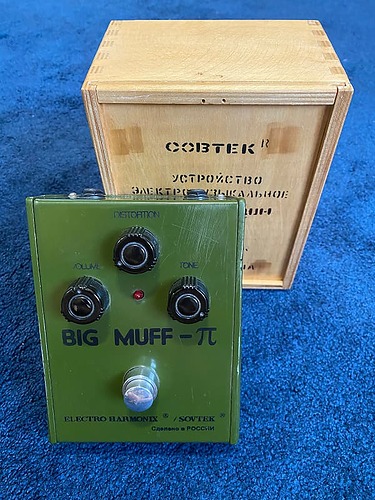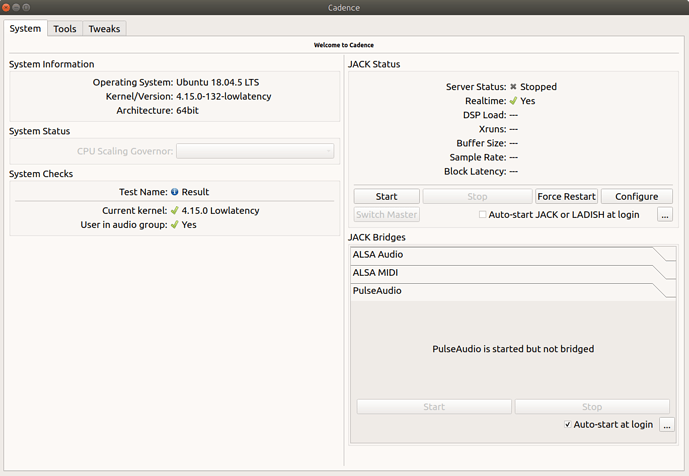Well okay. I look forward to hearing the recordings though.
Is your AC30 2x12? Which speaker(s)?
It’s a 2x12. I’m not much of a gear geek and now I’ve forgotten which speakers it came with and it’s out on loan to a friend. It’s a totally standard model from 2012.
I think it’s the Celestion Blues? Or Greenbacks.
Edit: If you’re going to sample an AC30 I’d love to hear the simulated effect at full saturation and then brought down to semi-clean with the guitar volume knob if that can actually be done.
Celestion Alnico Blues or Greenbacks. There are a lot of little tricks you could do to knock some of the hair off an AC30. Those Blues are really efficient speakers. The thing is that venues with no PA are really tough because amps are kind of as loud as they are. By that I mean most amps have a sweet spot, and that’s just kind of where it needs to live volume-wise. It’s hard to explain that to a club owner because they think the volume control on a guitar amp is like a volume control on their car radio. It’s not.
I’ll see what I can do.
I joined a little cover band a couple years ago and I bought a modern channel switching tube amp. If I had it to do over again I would study up on some of the gear you mentioned above or just run a transparent clean amp and use stompboxes for everything.
The AC30 is just a lost cause as far as I can tell. I don’t remember now but I bought a decibel reader and I think I was going for something like 85 to 90 decibels, which the AC30 hits pretty much as soon as you move the master volume a quarter of the way up or so. I’m going off memory, but the point is there was just too wide a gulf between ideal power settings and the upper limit on an acceptable decibel level for the places we were playing.
It would literally shake the wax inside my ear drums it’s so loud. I used to run a long cord and play through it from another room so I didn’t deafen myself. It was physically painful to be next to it.
Also not that I’m not curious but don’t bother with the AC30 emulation on my account. I just thought that might be where you were going with your questions about my amp.
Legato turned staccato at that one point. Too good
Here’s a quick clip. This isn’t the edge-of-breakup stuff I was talking about but something else. I don’t really play metal but needed metal tones for a project and had to look at how the kids are doing it. The answer was a lot of noise gate, compression, limiter, and hi/low pass filters. Amp isn’t as dimed as I thought; distortion pedal is doing a lot of the work. It’s because the bottom end can get too loose.
Here is the entirely-simulated signal chain:
Noise gate / Compressor →
ProCo Rat clone →
JCM 800 tone stack →
12AX7/6V6 push-pull amp simulation: about 70% on all volume/gain →
Multiband EQ for shaping (cut <80, cut >10k, adjust mids) →
Mono convolver: Celestion G12M FFIR (100% wet) →
Stereo chorus (just a touch) →
Stereo convolver: Reverb IR (ironically named “Metallica”) (1% wet)*
I usually arm recording for both the dry (muted) and processed signals, set a click or backing track, and start riffing. If I get anything usable I can extract it later. Capturing the dry allows me to re-amp. For example, this session had some ideas I liked, but it needs EQ work and tighter reverbs for an actual track. If I didn’t flub the performance in a few spots I could have used it on a track.
I have the circuits and speakers for an AC30 so I’ll mess with it. It’s not an amp I’m familiar with actually playing so dunno what it’s supposed to sound like other Brian May.
When I was like 16 I was on a trip with my parents and scooped one of these up from a pawn shop. Now I have no idea where it is. Probably at my parents house somewhere.
Sounds really good, btw.
Are the originals worth insane money now? I recently did one of those closet finds at my parents’ house and pulled out a green Sovtek Big Muff Pi in the original plywood box and with the elusive battery cover. Just like this one only better condition:
I just checked ebay out of curiosity and originals are going from >$500 to $1k and change. Not bad. Considering it’s something I haven’t touched in at least 20 years I should make an effort to find it and throw it on the market.
90s nostalgia stuff is going to absolutely moon. Well, a lot of it already has, but in the next 10 years I assume it will get insane. I looked at recent prices on Parker guitars and felt kind of sad that the one I have is probably the only one I’ll ever have.
*Same thing with Steinbergers. I once owned an 80s GM TransTrem and it’s the only guitar I ever regret selling. They are stupid money now.
Well I am definitely gonna at least try this software out now.
Guitarix is Linux only and you have to build the latest version yourself from the tarball. If you’re on Windows or Mac check out the AmpliTube or Guitar Rig free options to get started.
I’ve got an Ubuntu install going but if the version you’re using today will eventually be the one I can install by easier methods I may just wait.
The software center one works fine. For the latest build I had to track down and manually install about a dozen package dependencies that wouldn’t play nice and make some slight changes in the build config file. Could be easier for you though.
Forgot to say that Guitarix is a Jack audio application, so you have to get Jack running. Some people use Qjackctl, and it’s ok, but you have to patch all of the inputs and outputs yourself. I found that Cadence is easier and does it automatically. Cadence can be a little tricky to install on a stock Ubuntu distro but I can’t remember the trick.
There’s other stuff you need to do to optimize for real-time audio though. You’ll probably want to install the low latency kernel. You need to add a user to the @audio group and unlock memory restrictions for certain applications like your DAW. You need to bridge ALSA, Pulseaudio, and Jack if you want to connect audio from different sources (Cadence should do this automatically but you may have to install the bridge packages yourself).
If you check my post history, you’ll see that it took several months to figure out how to get all of this working. Maybe you’re a crack Linux user and this will all be easy. If not, a fresh install of Ubuntu Studio should have most of this working right out of the box.
Here is the Cadence interface:
So I just press START and it starts the Jack daemon, connects all of the bridges, and patches the input/outputs of any Jack application I want to run like Guitarix. There’s a visual patch bay application under the Tools tab called Catia for custom signal routing and a bunch of other stuff.
Thank you for this info. A while back I got LMMS running for some synth stuff I was going to do in the band before Covid came but I have completely forgotten the steps I had to take to get it working right.
I know very little about Linux but I always seem to get enough information from google searches to muddle through slowly. When I get ambitious enough I’ll start with your Ubuntu studio recommendation.
I messed around briefly with the free Amplitube 5 software on Windows to get a taste. If nothing else the tone is far superior at bedroom volume to what you can get out of a real amp.
I tried the standard Marshall stack tone and while out of the box it was a bit more round sounding on the bridge pickup than I am used to it was also much sweeter than what I’m able to get out of my amp, which is a Hughes & Kettner Grandmeister 40. Sweeter too than my buddy’s JCM 900. It’s as if all the rough edges were just sanded down.
Man, I never went down the drummer reacts to blah blah videos before tonight and I did for Tool Pneuma. Amazing the horribleness of some of their reactions and them actually being teachers lol. The video is ridiculous btw I suggest a watch. It’s really really good. Think the guitar reactions are more interesting for me since I know less. Maybe if I find one that’s decent I suppose.



